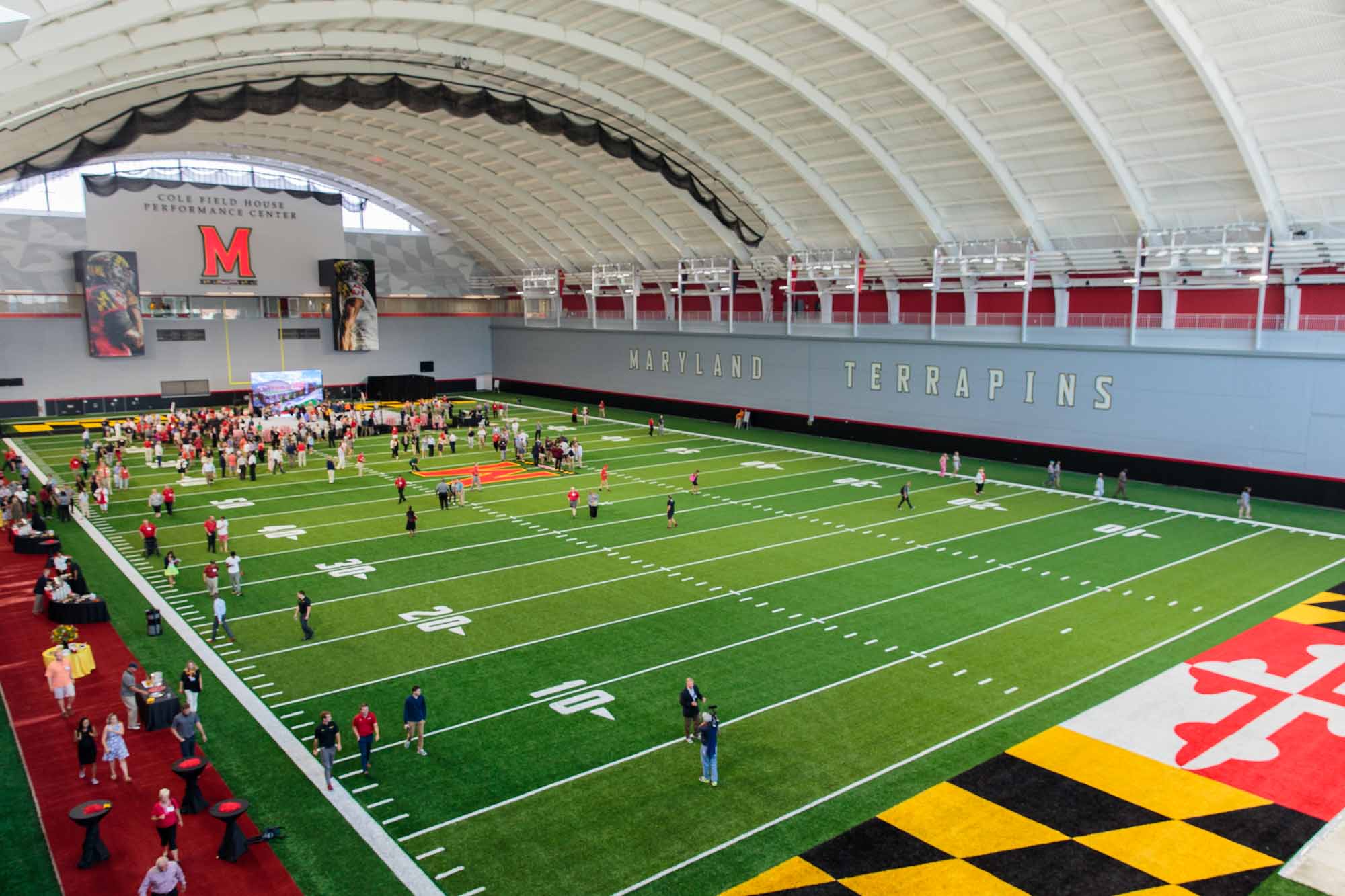Views expressed in opinion columns are the author’s own.
It’s been a bad summer for the Maryland football team, but the truth is that it’s been a bad couple of years. The team has finished with a winning record just three out of the past nine seasons, during which time the head coach has been replaced twice (with another replacement potentially on the horizon).
Maryland football ranked third-to-last in attendance in the Big Ten last year, which should come as no surprise to anyone who’s witnessed the rows of empty bleachers that have become a fixture of home games. Most salient among the program’s woes is, of course, the recent death of Jordan McNair and emerging reports of a toxic culture that may have led to it.
In light of these problems and others, the time has come for frank discussion of a question seemingly absent from the discourse surrounding athletics at this university — namely, whether the university should continue to sponsor a varsity football program at all. There are a few compelling reasons to think the answer is a resounding “no.”
For one, this university has committed and continues to commit enormous sums of money to the football team. While it’s true that the program has operated in the black in terms of its day-to-day operations for the past few years, I speak more of the multi-million-dollar ancillary costs that crop up with alarming frequency.
Maryland spent $2 million to buy out the final year of coach Ralph Friedgen’s contract when he was fired in 2010, then repeated the process several years later with Randy Edsall for a buyout of $500,000 plus $4.2 million in salary. Strength and conditioning coach Rick Court resigned this summer after accusations of verbally abusing players, but took home a $315,000 settlement in the process. The $196 million for the re-envisioned Cole Field House currently under construction is perhaps the largest testament to just how money goes into this university’s football team.
These sorts of expenditures would be egregious even if the university had more money than it knew what to do with. In the age of differential tuition and disappearing #104 buses, they are nothing less than insulting.
It’s true that most of Cole Field House is being funded by donations. It’s also true that those donations — in addition to millions of dollars of university money — are being spent on a project that will be useless to the vast majority of the student body. The problem is as much about the appearance that the university prioritizes athletics over its commitment to education as the actual dollars being thrown away.
Even if the team cost this university nothing, there are compelling reasons to think that no one should play college football, period. A 2017 report from researchers at Boston University found chronic traumatic encephalopathy, a debilitating neurodegenerative disease linked to repeated head trauma, in the brains of 48 out of 53 deceased former college football players.
The evidence on this front is abundant and sobering: Playing college or pro football is a ticket to permanent brain damage. If playing field hockey dramatically increased the likelihood that one would need to have both legs amputated later in life, it seems unlikely the university would sponsor a field hockey team. It’s unclear why similar logic doesn’t apply in the case of CTE and football.
While the players are presumably aware of the risks involved and choose to play anyway, one wonders why this might be the case. The national obsession with the sport — perpetuated in large part by highly visible universities that continue to promote it — likely plays a significant role in their calculus.
This university would neither be unprecedented in axing its football team nor alone among large universities in failing to sponsor one. The University of Chicago is perhaps the most cited football apostate, having abandoned its troubled program in 1939, gone team-less for 30 years, and returned in a much reduced form to what was the equivalent of Division III in 1969, where it has remained.
In better comparison with this university: CSU Long Beach, George Mason, University of Wisconsin-Milwaukee, UC Irvine, University of Texas-Arlington and Virginia Commonwealth University are all NCAA Division I public research universities, with enrollments of at least 30,000 students, that do not sponsor football teams.
President Wallace Loh’s favorite metaphor for athletics is that they’re the “front porch” of the university, the face we present to the public. Allow me to extend the metaphor. If your front porch regularly required multi-million-dollar improvements, caused brain disease in those who sat on it and recently left someone dead, wouldn’t you consider removing it?
Joey Marcellino is a junior jazz saxophone, physics and philosophy major. He can be reached at fmarcel1@terpmail.umd.edu.



